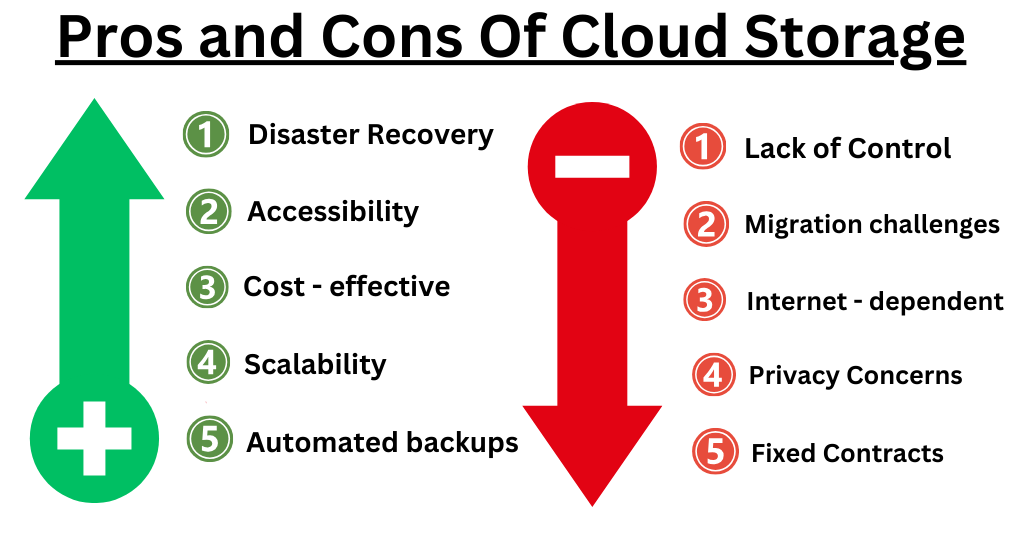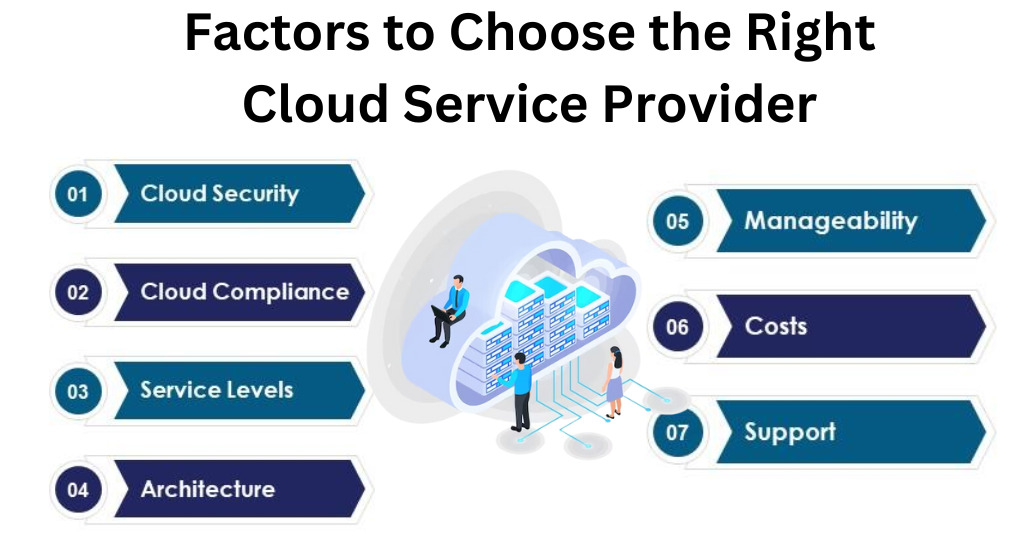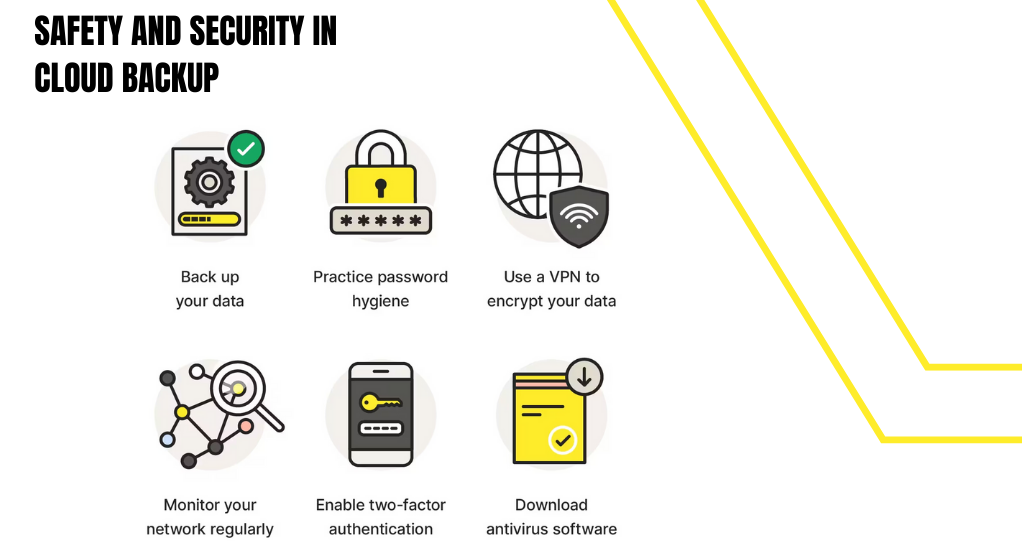
How to Backup and Restore Data in the Cloud Effectively
In today’s digital age, data is the lifeblood of businesses, institutions, and even individuals. From precious memories captured in photographs to crucial business documents, our reliance on digital data has never been more pronounced. However, with the increasing volume of data comes the responsibility of ensuring its safety and accessibility. This is where the concept of backing up data comes into play. And with the rise of cloud storage solutions, the process has become more streamlined and efficient than ever before.
The Importance of Backing Up Data
Every day, vast amounts of data are generated, modified, and deleted. While technology has made data storage more reliable, it’s not immune to failures. Hard drives can crash, files can get corrupted, and sometimes, accidental deletions happen. In a survey conducted by [Data Source], it was found that:
| Reason for Data Loss | Percentage |
|---|---|
| Accidental Deletion | 32% |
| Hardware Failures | 27% |
| Software Corruption | 19% |
| Virus or Malware Attack | 15% |
| Natural Disasters | 7% |
Given these statistics, it’s evident that data loss is a real and prevalent threat. Without a proper backup, the repercussions can range from minor inconveniences to catastrophic business failures.
The Rise of Cloud Storage Solutions
Traditionally, data backup involved physical storage devices like CDs, DVDs, or external hard drives. While effective, these methods had limitations in terms of storage capacity, accessibility, and potential for physical damage. Enter cloud storage – a revolutionary way to store data on remote servers accessed via the internet.
The advantages of cloud storage are manifold:
- Scalability: Unlike physical devices where you’re limited by their storage capacity, cloud storage allows you to scale up or down based on your needs.
- Accessibility: Data stored in the cloud can be accessed from anywhere with an internet connection, making it perfect for businesses with remote teams or individuals on the move.
- Cost-Effective: With various subscription models available, users can choose a plan that fits their budget and needs, often proving more cost-effective than maintaining physical storage systems.
- Security: Reputable cloud service providers invest heavily in security measures, ensuring that your data is protected from threats and unauthorized access.
Understanding Cloud Backup

As we venture further into the realm of digital data storage, it’s essential to grasp the concept of cloud backup fully. At its core, cloud backup is the process of storing data remotely on servers hosted by third-party providers. But how does it differ from traditional backup methods, and why is it becoming the preferred choice for many?
What is Cloud Backup?
Cloud backup, often referred to as online backup or remote backup, involves sending a copy of your data over the internet to a remote server. These servers are housed in data centers – secure, temperature-controlled facilities equipped with redundant power supplies and high-speed internet connections. The primary aim is to ensure that even if something happens to your local data, a copy is safely stored off-site and can be retrieved when needed.
The process is typically automated, with many cloud backup services offering scheduled backups. This means that after the initial setup, your data is backed up at regular intervals without any manual intervention.
How Does It Differ from Traditional Backup Methods?
Traditional backup methods, such as using external hard drives, CDs, or DVDs, involve a more hands-on approach. Here’s a comparative look at cloud backup versus traditional methods:
| Criteria | Cloud Backup | Traditional Backup |
|---|---|---|
| Accessibility | Access from anywhere with an internet connection. | Access limited to where the physical device is located. |
| Automation | Scheduled backups can be automated. | Often requires manual intervention for each backup. |
| Storage Capacity | Scalable based on user needs. | Limited to the device’s capacity. |
| Physical Durability | No risk of physical damage as data is stored remotely. | Risk of damage, wear, and tear. |
| Cost Over Time | Subscription-based, but can be cost-effective long-term. | One-time purchase, but costs can add up with upgrades. |
| Recovery Time | Quick recovery due to high-speed internet. | Can be slower, especially if the device is not at hand. |
From the table, it’s evident that while traditional methods have their merits, cloud backup offers a more flexible, scalable, and often more reliable solution for modern needs.
Benefits of Cloud Backup
The digital landscape is evolving rapidly, and with it, the need for robust and reliable data backup solutions. Cloud backup has emerged as a frontrunner in this domain, offering a plethora of benefits that make it an attractive option for both individuals and businesses. Let’s delve into some of the most significant advantages of using cloud backup.
Accessibility from Anywhere
One of the standout features of cloud backup is the ability to access your data from virtually anywhere in the world, provided you have an internet connection. Whether you’re traveling, working from a remote location, or simply away from your primary device, your data remains within reach. This level of accessibility ensures that you’re never left stranded without essential files or information.
Enhanced Security Features
Data security is a paramount concern, especially with the rising threats of cyberattacks and data breaches. Cloud backup providers understand this and invest heavily in state-of-the-art security measures. This includes:
- Encryption: Data is encrypted both during transmission (while being backed up) and at rest (when stored on the cloud servers). This ensures that even if someone were to intercept the data, it would be unreadable without the decryption key.
- Multi-Factor Authentication (MFA): An added layer of security that requires users to provide two or more verification methods to access their data.
- Regular Security Audits: Cloud providers frequently conduct security audits to identify and rectify potential vulnerabilities.
Cost-Effectiveness and Scalability
Traditional backup solutions often require significant upfront costs, especially when purchasing high-capacity storage devices. With cloud backup, you typically pay a subscription fee based on your storage needs. As your requirements grow, you can easily scale up your storage plan. This flexibility ensures you only pay for what you use, making it a cost-effective solution in the long run.
Setting Up Cloud Backup

As we’ve established the undeniable benefits of cloud backup, the next logical step is understanding how to set it up. Whether you’re a tech-savvy individual or a business owner with limited IT knowledge, the process is designed to be user-friendly and straightforward. Let’s walk through the essential steps to get your cloud backup up and running.
Choosing the Right Cloud Service Provider
Before setting up your cloud backup, carefully choose a provider based on these factors: storage capacity, security measures, cost, and user reviews. Ensure the storage plans meet your current and future needs, prioritize security with features like encryption and multi-factor authentication, consider long-term costs, and consult user reviews for insights on user satisfaction and potential issues. This informed selection is crucial for a successful and secure cloud backup experience.
Steps to Back Up Your Data to the Cloud
- Sign Up: Once you’ve chosen a provider, sign up for an account. This often involves providing an email address, setting a password, and selecting a subscription plan.
- Download and Install the Backup Software: Most cloud backup providers offer software or apps that facilitate the backup process. Download and install this on your device.
- Select Data to Back Up: Open the software and choose the files, folders, or entire drives you wish to back up. Some software also offers the option to back up specific applications or system settings.
- Set a Backup Schedule: Determine how frequently you want your data to be backed up. Whether it’s daily, weekly, or at specific intervals, ensure it aligns with how often your data changes.
- Initiate the First Backup: While subsequent backups might only upload changed files (incremental backups), the first backup will likely take longer as it uploads all selected data.
- Monitor and Manage: Regularly check the software to ensure backups are occurring as scheduled. Most software will provide notifications or logs of completed backups or any issues encountered.
Restoring Data from the Cloud
While backing up data is a proactive measure to safeguard against potential data loss, the true test of a backup system lies in its ability to restore data efficiently and accurately. Whether you’re transitioning to a new device, recovering from a malware attack, or simply need an older version of a file, understanding the restoration process is crucial.
Situations Where Data Restoration is Needed
Device failures, accidental deletions, malware attacks, software glitches, and device transitions are all common scenarios where data can be compromised or lost. Fortunately, cloud backup offers a solution to these challenges. Whether your device unexpectedly fails, you accidentally delete a file, face a malware attack, experience software corruption, or transition to a new device, cloud backups provide a reliable safeguard, ensuring your data remains accessible and secure.
Step-by-Step Guide to Restoring Your Data
- Access Your Cloud Backup Software: Open the software or app you used for backing up. Ensure you’re logged in to the correct account.
- Navigate to the Restore Section: Most backup software will have a dedicated section or tab for restoration. It might be labeled as “Restore,” “Retrieve,” or something similar.
- Select the Data to Restore: You’ll typically see a list or a file tree of your backed-up data. Navigate through it and select the files, folders, or data you wish to restore.
- Choose a Restoration Destination: Decide where you want the restored data to be saved. It can be the original location or a new one, depending on your preference.
- Initiate the Restoration: Once you’ve made your selections, click on the restore option. The time it takes will depend on the amount of data and your internet speed.
- Verify the Restored Data: After the process is complete, navigate to the restoration destination and ensure all files are intact and accessible.
Safety and Security in Cloud Backup
In the realm of digital data, safety and security are paramount. While cloud backup offers a plethora of advantages, it’s essential to understand the measures in place to protect your data and the best practices you can adopt to further enhance its security.

Encryption and Data Protection
Encryption is the cornerstone of data security in cloud backups, safeguarding against unauthorized access at three key stages. “At Source Encryption” initiates protection before data leaves your device, ensuring it’s unreadable during transmission. “In-Transit Encryption” maintains this security as data travels to cloud servers, guarding against potential interception. Finally, “At-Rest Encryption” preserves data’s encrypted state on cloud servers, rendering it indecipherable without the decryption key.
The Role of Passwords and Two-Factor Authentication
Passwords play a crucial role in protecting your cloud backup account. However, with the increasing sophistication of cyberattacks, passwords alone might not suffice. This is where two-factor authentication (2FA) comes into play:
- Strong Passwords: Always opt for passwords that are a mix of letters (both uppercase and lowercase), numbers, and special characters. Avoid using easily guessable information like birthdays or names.
- Two-Factor Authentication: 2FA adds an additional layer of security. Even if someone were to guess or steal your password, they’d need a second verification method (like a code sent to your phone) to access your account.
Regular Security Audits and Updates
Staying updated is crucial in the ever-evolving landscape of cybersecurity:
- Software Updates: Ensure your cloud backup software is always updated to the latest version. Developers regularly release patches to fix any known vulnerabilities.
- Regular Audits: Periodically review your backup settings and the data you’re backing up. Remove any unnecessary or sensitive data that doesn’t need to be backed up.
Avoiding Common Mistakes
As with any technology, using cloud backup effectively requires a certain level of awareness and diligence. While the process is designed to be user-friendly, there are pitfalls that users can inadvertently fall into. By recognizing and avoiding these common mistakes, you can ensure that your cloud backup experience is both efficient and secure.
Not Regularly Updating Backups
Consistency is a critical factor in the realm of data backup. It’s tempting to set up automated backups and forget about them, but it’s imperative to maintain a proactive approach:
Firstly, regularly review and adjust your backup schedules to match the frequency of changes in your data. If you’re actively working on a project with dynamic updates, opting for daily backups ensures that your most recent work is consistently safeguarded, whereas weekly backups may suffice for less volatile data.
Additionally, consider the value of manual backups, especially for pivotal files or when significant changes occur. Rather than solely relying on automated processes, initiating a manual backup immediately after crucial modifications can offer an extra layer of security and ensure that critical data is promptly preserved.
Ignoring Backup Notifications or Errors
Backup software often provides notifications, be it for successful backups, errors, or other important information.
- Act on Errors: If you receive a notification about a backup error, address it immediately. It could be due to issues like insufficient storage or connectivity problems.
- Review Logs: Periodically check the backup logs. These provide a detailed record of each backup session and can alert you to any recurring issues.
Failing to Test Backup and Restoration Processes
Having a backup is one thing, but ensuring it works when you need it is another.
- Regular Restoration Tests: Periodically, try restoring a file or set of files from your backup. This not only ensures the backup is functional but also familiarizes you with the restoration process.
- Check File Integrity: After restoration, check the files to ensure they’re not corrupted and are fully functional.
Overlooking Security Best Practices
While we’ve touched upon security earlier, it’s worth reiterating the importance of adhering to best practices.
- Regular Password Changes: Change your cloud backup account password periodically. This reduces the risk of unauthorized access.
- Beware of Phishing Attempts: Be cautious of emails or messages claiming to be from your cloud backup provider, especially if they ask for personal information or passwords.
Transitioning to a New Device
In our fast-paced digital era, technology is constantly evolving. Devices become obsolete, new models emerge, and sometimes, we just fancy a change. In such scenarios, transitioning data becomes a pivotal concern. With cloud backup, this process is significantly simplified, ensuring a seamless transition with minimal disruptions.
How Cloud Backups Make Device Transitions Smoother
- Universal Access: Since your data is stored in the cloud, it’s not tied to any specific device. Whether you’re moving from an Android phone to an iPhone or from a Windows PC to a Mac, your data remains accessible.
- Consistent Data Across Devices: Cloud backup ensures that you have the latest version of your files, settings, and applications, providing a consistent experience across devices.
- Reduced Downtime: Traditional data transfers can be time-consuming. With cloud backups, you can quickly restore your data to a new device, ensuring minimal downtime.
Restoring Data on a New Device
- Install the Cloud Backup Software: On your new device, download and install the software or app from your cloud backup provider.
- Log In to Your Account: Ensure you’re logging into the same account where your data is backed up.
- Initiate the Restoration Process: Navigate to the restore section, select the data you wish to transfer, and begin the restoration. Depending on the amount of data and your internet speed, this process can vary in duration.
- Verify the Data: Once the restoration is complete, check the new device to ensure all files, settings, and applications are intact and functional.
Conclusion
In a digital world where data reigns supreme, the significance of effective data backup and restoration cannot be overstated. Cloud backup, with its accessibility, scalability, and security measures, has emerged as an indispensable tool for individuals and businesses alike. It’s not merely a convenience but a necessity to protect our digital memories and critical information.
As we peer into the future, cloud backup’s role will only grow more pivotal. Evolving technologies, ever-expanding data volumes, and evolving security threats underscore the importance of staying informed and proactive in safeguarding our digital assets. With the knowledge and confidence gained from this comprehensive guide, you are now equipped to make the most of cloud backup, ensuring that your data remains secure, accessible, and resilient in the face of the challenges of our digital age. Embrace cloud backup as your trusted ally in the ongoing journey of data preservation and security.


Leave a Reply